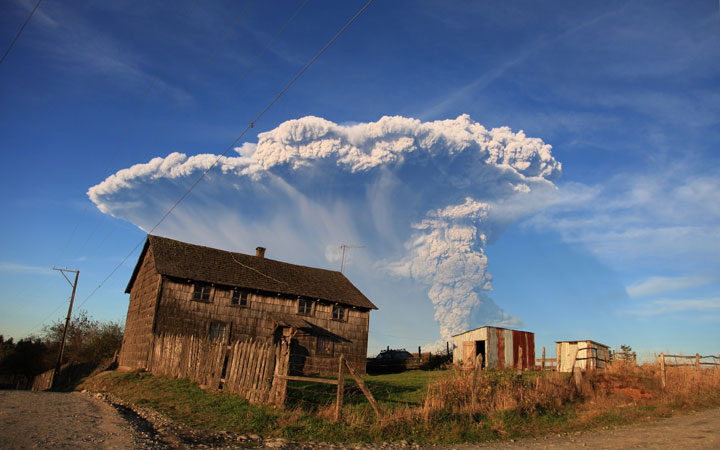Watch the video above: Calbuco volcano erupts, town evacuated

TORONTO – The violent eruption of the Calbuco volcano in Chile this week seemingly came out of nowhere, something surprising in this day and age of science and technology. But the fact is, predicting what a volcano will do is difficult.
“Volcanoes all behave in their own unique kind of way,” said Heather Wright of the U.S. Geological Survey.
READ MORE: These photos show what it looks like when a volcano erupts over your town
While some volcanoes show signs of impending activity, reading those signs isn’t so easy.
Possible indications of an eruption include small steam explosions, seismicity (earthquakes), gas emissions, the cracking of the ground at the volcano or even large deformation of the volcano itself.
And Calbuco wasn’t displaying these indications far in advance of its eruption.
“The warning signs were much closer in time to the first eruptive pulse,” said Wright. “They first saw a seismic swarm about two hours before that eruption on Wednesday. But the seismic events were very small in magnitude. And so they likened it to the kind of seismicity they see in the background at other volcanoes.”
Because it looked like something that wasn’t that unusual, the National Mining and Geology Service (Sernageomin) which monitors volcanic activity, didn’t believe it indicated an impending eruption.
The first real indications only happened about a half hour before the eruptions.
“Just…10 minutes prior to eruption, the seismic activity increased rapidly,” Wright said.
The number of seismic events and their size increased enough that indicated that the agency believed a possible eruption was near.
“So really there was only about 10 minutes of diagnostic warning that something was coming.”
This isn’t the first time little warning has been given ahead of an eruption. In 1994, only one day’s warning was given when the Rabaul volcano in Papua New Guinea erupted.
Chile itself isn’t a stranger to volcanoes: it’s home to the largest number of historically active volcanoes in South America with 41.
In 2008, another Chilean volcano gave little indication that it was ready to blow.
On April 30, 2008, earthquakes were felt around the Chaitén volcano. Just over a day later it erupted, sending ash 17 km into the air. The eruption lasted for six hours.
The key to providing adequate warning lies with seismometers, which measure ground activity.
READ MORE: Ash blankets towns as Chile’s Calbuco volcano erupts twice; authorities warn of 3rd blast
“In general, for volcanologists around the world, our best chance of getting the most warning for eruptions is to have seismometers that are close to the volcano, so we can pick up those tiniest, tiniest little signals that might be telling us something about whats going to happen,” Wright said.
Even then, seismic activity happens all the time around volcanoes with nothing happening. And that’s the continuing code that seismologists and geologists are trying to crack. But Mother Nature does not give up her secrets easily.




Comments